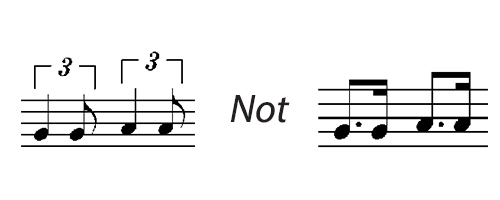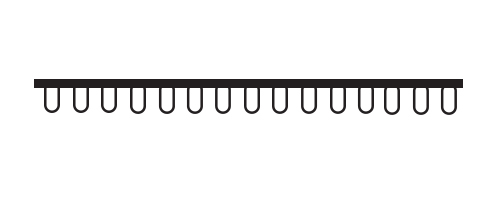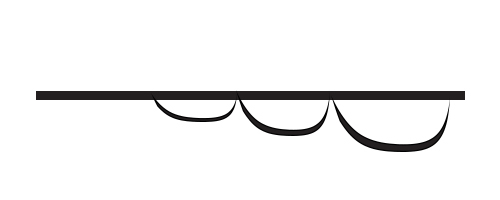Teaching Jazz Concepts to Concert Band Saxophonists
by Douglas Skinner
Date Posted: November 02, 2017

“The band played great but the saxes sounded square.” This is a comment no high school band director wants to hear. Saxophonists with a concert band background almost always are asked to play in the school jazz ensemble. The director’s challenge is to teach the jazz concepts that will convert them to “jazzers.” Two of the biggest questions most directors face are:
· What are the key concepts that saxophonists must learn?
· How do you go about teaching them?
Section Sound
Changing the sound of the sax section from a traditional sound to a jazz sound begins with the mouthpiece and reed. The sax section must be able to balance with 8-10 brass players and a rhythm section. Select mouthpiece/reed combinations that are suited for this purpose. The jazz tone needs to be brighter and louder. As a result, the overall section sound will be more prominent, accents will have more impact, and the section will be able to balance the brass.
Students must be able to control their new “set-up.” Making an extreme equipment change from what is used in concert band is not recommended. The mouthpiece should have a slightly wider tip opening (distance from tip of mouthpiece to tip of reed) and a smaller chamber (interior) for increased projection. Various manufacturers identify tip openings and chambers in different ways. There are mouthpiece comparison charts on the internet and in manufacturer’s catalogs that are helpful.
Here are my recommendations for mouthpieces from the Vandoren line:
· Try the Java A35 or Jumbo Java A35 for alto
· Java T45 or Jumbo Java T45 for tenor
· B75 for baritone
When trying them, keep in mind that wider tip openings require softer reeds.
Compile a listening list that includes individual artists on alto, tenor and baritone saxophone as well as section examples from the big bands - Basie, Ellington, Kenton, Ferguson and others. The more jazz saxophone recordings the students hear, the sooner they will begin to sound like jazz players themselves.
Ensemble Set-Up
To facilitate the optimum combination of blend and balance with the rest of the ensemble, the traditional set-up configuration (as viewed by the audience) is the best option:
Rhythm section
1st tenor 2nd alto lead alto 2nd tenor baritone
Section Style
In the early stages of development, two style basics should be addressed:
1. articulations and
2. swing eighth notes
Jazz arrangements look one way on paper but sound quite different when performed. The printed notes are merely representations of a desired sound and it is up to the performers to interpret them to fit the style of the arrangement.
These three articulation markings are found in nearly every jazz arrangement and should be mastered. Assign a “scat singing syllable” to each one and sing the phrase before playing it:
1. > = tongue accent, note is full value – “too”
2. ^ = heavy accent, starting and stopping the note with the tongue – “daht”
3. – = no accent, full value, legato tongue – “doo”
Lennie Niehaus’ Jazz Conception for the Saxophone, Intermediate Volume, is an excellent book for teaching these articulations. This text is suitable for use in private lessons as well as for sectional rehearsals. On the first ten exercises assign the alto and bari players the original, and have the tenors read the transposed parts. Have the students play each exercise with an audible metronome, focusing on playing the markings identically as a section. Within a short time, the section should be articulating identically.
There is a page in the Niehaus book that describes how to play swing eighth notes in the correct style. The explanation is simple and straight-forward: play triplets instead of dotted-eights and sixteenths. For example:

The triplet notation with occasional accents on the third note of the triplet is fundamental to the swing eighth note “feel.” Even experienced jazz students often play the dotted eighth/sixteenth version without realizing it. The difference is rhythmically subtle, but stylistically huge!
Here is a three step method for teaching swing eighth notes in a flowing, jazz articulated style:
1. Play the passage very slowly, articulating all notes of the triplet.
2. Tie the first two triplet notes together, maintaining all notes at full value.
3. Accent the third note of the triplet.

Vibrato
Less is better. A good jazz vibrato played by the lead player is sometimes enough. The differences between a classical vibrato and jazz vibrato are best learned through listening. Essentially, a classical vibrato is part of the sound and is continuous from the start of the note:

Jazz vibrato begins with a straight tone and gradually changes into wide and slow pulses:

The line represents a straight tone. The bottom lip relaxes and the pitch drops flat and returns to the straight tone. Saxophone vibrato is produced by a lip/jaw combination and is described as a pitch vibrato.
Performance Tips
Here are a few more tips to help you refine the section sound and rhythmical approach of your sax section:
· Purchase arrangements that come with performance recordings.
· Play recordings of the Count Basie Band to illustrate section sound, blend and swing
style.
· Play recordings of Supersax to inspire your students.
· Use Take the Lead by Stan Seckler and Jazz Ensemble Directors Manual by Rick Lawn as reference texts.
· For background passages, use no vibrato and less volume.
· No vibrato for unison passages.
· Eighth notes are played even and not swing style in ballads.
· Eighth notes are played evenly in rock and Latin charts.
· Do not double section parts.
· Accent notes on the upbeat in eighth note passages.
· Distinguish between styles - lead player uses fast vibrato (i.e. Marshal Royal) on Basie charts, no vibrato in Kenton charts, etc.
Converting classical saxophonists to proficient jazz players requires a plan and some patience. The result is a rewarding experience for the band director, students and audience at the first jazz concert.
Douglas Skinner is the retired former Professor of Saxophone at Texas State University. He holds the Bachelor of Music and Master of Music Education degrees from The University of North Texas where he was a Graduate Teaching Assistant. Mr. Skinner served three years in the 328th Army Band, performing on saxophone, bassoon and clarinet. As a soloist and member of the Nova Saxophone Quartet, he presented concerts in England, Poland, Scotland, Russia, Turkey, Hawaii, Mexico and throughout the United States. The Nova Saxophone Quartet recorded “InNOVAtions,” “Double Image” and “Outside the Box” on Musical Heritage Society and Equilibrium labels. Mr. Skinner’s publications include articles in Jazz Educators Journal, Saxophone Symposium, and Popular Musicians. In addition, he has authored 15 essays on musicians in various encyclopedias published by Salem Press. Mr. Skinner directed the jazz program for several years at Texas State and has served four terms as Interim Director of the School of Music.
Subscribe to the We Are Vandoren E-newsletter (WAVE) to receive 4 weekly articles for Performers, Students, and Educators